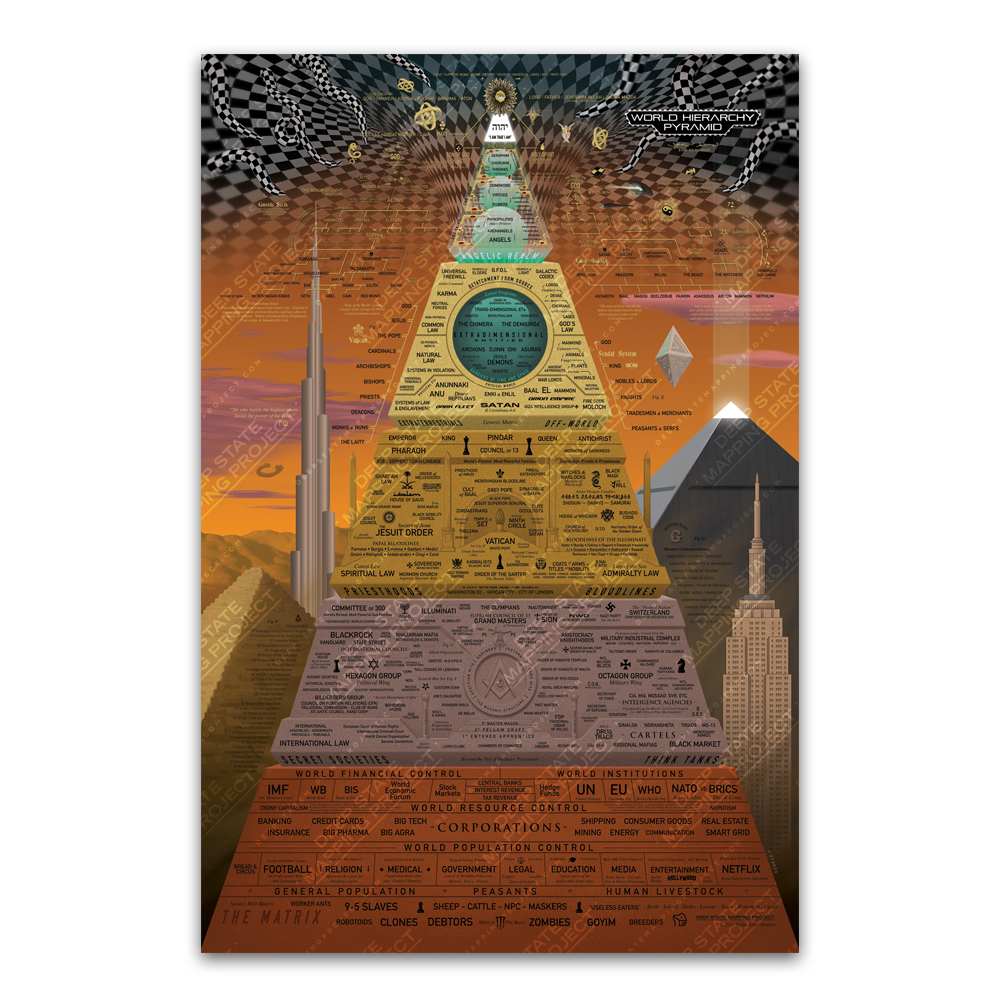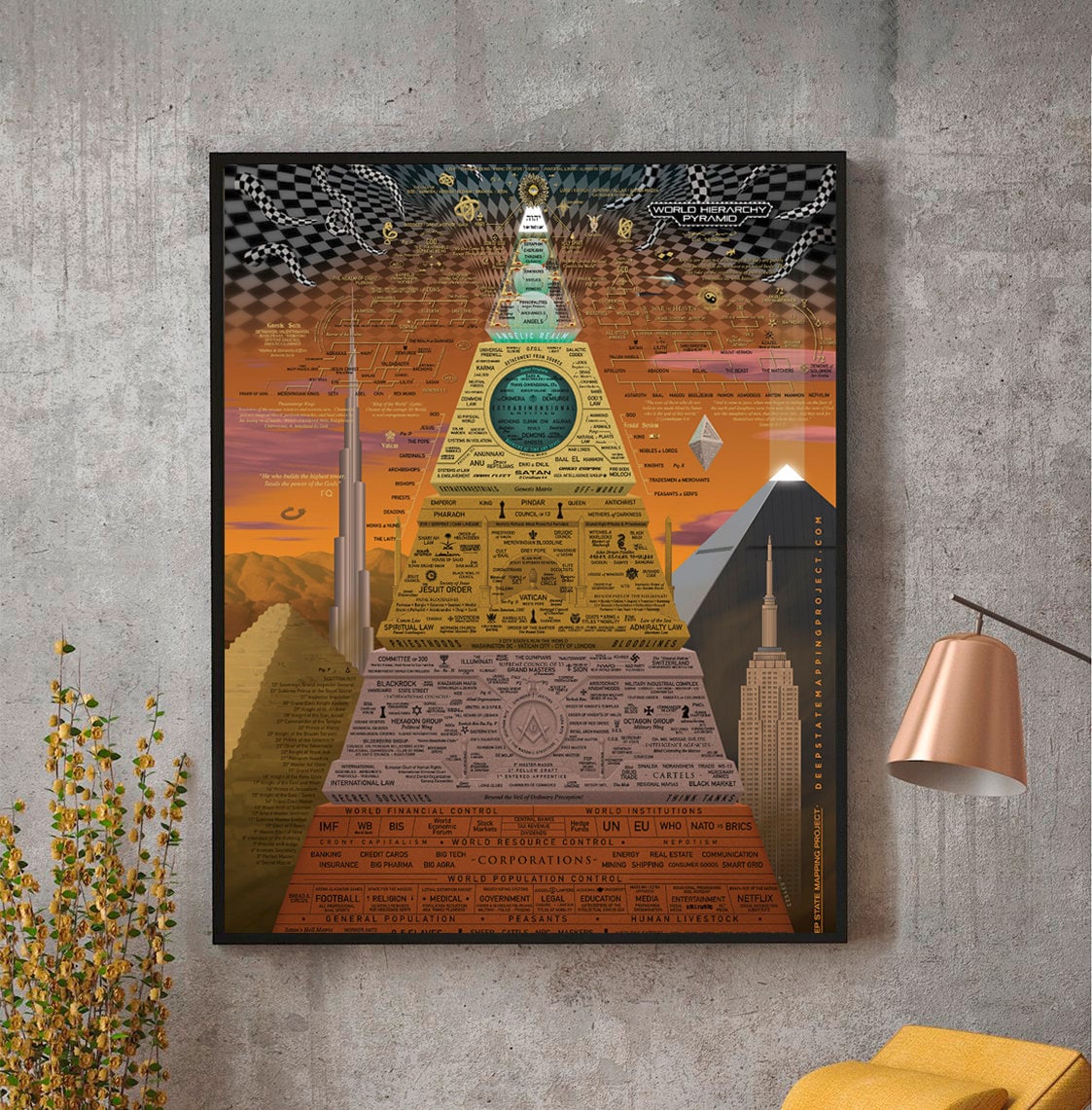World Hierarchy Pyramid Meaning: A Deep Dive Into Global Power Structures
Ever wondered how the world is structured in terms of power, influence, and hierarchy? The world hierarchy pyramid meaning is a concept that helps us understand the complex layers of global dominance. From political powerhouses to economic titans, this pyramid gives us a clearer picture of who holds the reins and why it matters. So buckle up, because we’re diving headfirst into the fascinating world of global hierarchies.
Imagine a pyramid, but instead of being made of stone, it’s built on layers of power, influence, and control. At the top, you’ve got the big shots—the countries, organizations, and individuals shaping the world as we know it. And at the bottom? Well, that’s where the rest of us sit, trying to make sense of it all. This isn’t just about who’s in charge; it’s about understanding the dynamics that keep this system running.
Why does the world hierarchy pyramid matter? Because it affects everything—from global politics and economics to social structures and even your daily life. Understanding these layers can help you navigate the world better and make informed decisions. So let’s break it down and uncover the secrets behind this pyramid of power.
Read also:Farmhouse Fixer Cancelled What Happened And Why Fans Are Devastated
Understanding the Basics of the World Hierarchy Pyramid
When we talk about the world hierarchy pyramid meaning, we’re referring to a structure that categorizes global power based on various factors like economic strength, political influence, military power, and cultural dominance. Think of it like a ladder where each rung represents a level of influence. But unlike a ladder, this pyramid isn’t always straightforward—it’s more like a web of interconnected forces that shape our world.
Key Components of the Pyramid
Let’s break it down into its key components:
- Superpowers: These are the top dogs of the pyramid, countries like the United States, China, and Russia. They dominate global politics, economics, and military affairs.
- Regional Powers: Think of countries like Germany, Japan, and India. They may not have the global reach of superpowers, but they wield significant influence in their respective regions.
- Developing Nations: These are the countries working their way up the ladder, striving for economic growth and stability. They often rely on the support of more powerful nations.
- Non-State Actors: Organizations like the United Nations, multinational corporations, and even terrorist groups play a role in shaping the global hierarchy.
Historical Context: How Did We Get Here?
To truly understand the world hierarchy pyramid meaning, we need to look back at history. The global power structure has evolved over centuries, shaped by wars, treaties, and technological advancements. From the rise of empires to the modern era of globalization, each period has left its mark on the pyramid.
Key Historical Events Shaping the Pyramid
Here are some pivotal moments that have influenced the global hierarchy:
- The Cold War: This standoff between the USA and the Soviet Union defined much of the 20th century and solidified the concept of superpowers.
- Colonialism: European powers once dominated the world, carving up continents and spreading their influence far and wide.
- Globalization: In recent decades, the world has become more interconnected, with countries collaborating on trade, technology, and culture.
The Role of Economics in the World Hierarchy Pyramid
Economics plays a crucial role in shaping the world hierarchy pyramid. Countries with strong economies often hold more power and influence on the global stage. Think about it: if you’ve got the money, you’ve got the means to shape policies, influence markets, and even sway political decisions.
Top Economic Powers
Here are some of the economic powerhouses that dominate the pyramid:
Read also:Discovering Ethraquoethfrac34ethraquoethdeg Ethcedilethfrac34ethraquoethdegethfrac12ethcedil Ethfrac14ethfrac34ethfrac14ethfrac34ethdeg Your Ultimate Guide
- United States: With the largest economy in the world, the US is a key player in global markets.
- China: Rapid economic growth has propelled China to the forefront of global trade.
- European Union: As a collective, the EU wields significant economic power, especially in trade and finance.
Political Influence and the World Hierarchy Pyramid
Political power is another critical factor in the world hierarchy pyramid. Countries with strong political systems and global influence often find themselves at the top of the pyramid. This isn’t just about having a stable government; it’s about being able to project power and influence on the international stage.
Key Political Players
Here are some of the most influential political entities:
- United Nations: As a global organization, the UN plays a vital role in maintaining peace and stability.
- G20: This group of major economies works together to address global challenges like climate change and economic instability.
- NATO: A military alliance that provides security and stability in Europe and beyond.
Military Power in the World Hierarchy Pyramid
Military strength is another key element of the world hierarchy pyramid. Countries with powerful militaries often have more leverage in global negotiations and conflicts. This isn’t just about having the biggest army; it’s about having advanced technology, strategic alliances, and the ability to project power.
Top Military Powers
Here are some of the most formidable military forces:
- United States: With the largest defense budget in the world, the US military is a force to be reckoned with.
- China: Rapid modernization has turned the Chinese military into a major player on the global stage.
- Russia: Despite economic challenges, Russia maintains a powerful military presence, especially in Eastern Europe.
Cultural Influence and the World Hierarchy Pyramid
Cultural dominance is another aspect of the world hierarchy pyramid that often gets overlooked. Countries with strong cultural influence can shape global trends, values, and even language. Think about how Hollywood movies, American music, and Japanese anime have become global phenomena.
Key Cultural Contributors
Here are some countries and regions that have made a significant cultural impact:
- United States: Hollywood, Silicon Valley, and American pop culture have a massive global reach.
- Japan: Anime, manga, and video games have made Japan a cultural powerhouse.
- France: Known for its art, fashion, and cuisine, France continues to influence global culture.
Non-State Actors in the World Hierarchy Pyramid
While countries dominate the world hierarchy pyramid, non-state actors also play a significant role. These can include international organizations, multinational corporations, and even terrorist groups. Their influence may not be as visible as that of nations, but it’s undeniable.
Key Non-State Actors
Here are some of the most influential non-state actors:
- United Nations: As mentioned earlier, the UN plays a crucial role in global governance and peacekeeping.
- Multinational Corporations: Companies like Apple, Amazon, and Google wield significant economic and political power.
- Terrorist Groups: Organizations like ISIS and Al-Qaeda have had a profound impact on global security.
Challenges Facing the World Hierarchy Pyramid
Like any structure, the world hierarchy pyramid faces its share of challenges. From rising tensions between superpowers to the growing influence of non-state actors, the global power structure is constantly evolving. Understanding these challenges is key to predicting future shifts in the pyramid.
Key Challenges
Here are some of the most pressing challenges:
- Climate Change: Environmental issues threaten global stability and require cooperation between nations.
- Cybersecurity: As technology advances, so do the risks of cyberattacks and digital warfare.
- Economic Inequality: The gap between rich and poor nations continues to widen, creating social and political tensions.
The Future of the World Hierarchy Pyramid
So, what does the future hold for the world hierarchy pyramid? As global dynamics continue to shift, we can expect to see changes in the power structure. Emerging economies like India and Brazil may rise to prominence, while traditional powers face new challenges. The rise of digital technologies and artificial intelligence could also reshape the pyramid in ways we can’t yet imagine.
Predictions for the Future
Here are some predictions for the future of the world hierarchy pyramid:
- Increased Collaboration: Countries may work more closely together to address global challenges like climate change and cybersecurity.
- Technological Dominance: Nations that lead in AI and digital innovation may gain significant influence.
- Shifting Alliances: Traditional alliances may evolve as new powers emerge and global priorities change.
Conclusion: What You Can Do
Understanding the world hierarchy pyramid meaning is more than just an academic exercise; it’s about gaining insight into the forces that shape our world. Whether you’re a student, a professional, or simply someone interested in global affairs, this knowledge can help you make better decisions and navigate the complexities of modern life.
So what’s next? Take a moment to reflect on what you’ve learned and consider how it applies to your life. Share this article with friends, leave a comment, or explore more content on our site. Together, we can deepen our understanding of the world and work towards a better future.
Table of Contents
- Understanding the Basics of the World Hierarchy Pyramid
- Historical Context: How Did We Get Here?
- The Role of Economics in the World Hierarchy Pyramid
- Political Influence and the World Hierarchy Pyramid
- Military Power in the World Hierarchy Pyramid
- Cultural Influence and the World Hierarchy Pyramid
- Non-State Actors in the World Hierarchy Pyramid
- Challenges Facing the World Hierarchy Pyramid
- The Future of the World Hierarchy Pyramid
- Conclusion: What You Can Do


